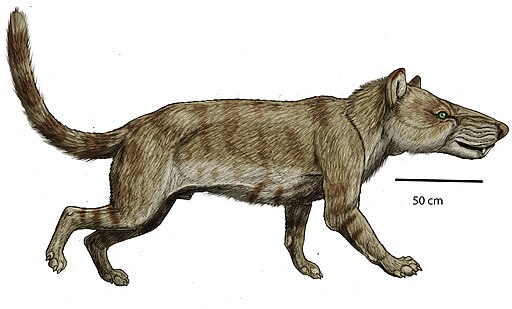Ancient Carnivores of the Eocene and Miocene
Hyaenodon was a genus of large, carnivorous mammals that lived from the Eocene to the Miocene epochs, approximately 42 to 15 million years ago.

| Meaning | Hyena tooth [Hyaen-odon] |
| Pronunciation | hy-EE-nuh-don |
| When: | Eocene to Miocene (about 42–16 million years ago) |
| Where: | North America, Europe, Asia North America, Europe, Asia |
| What: | Mammal (carnivorous) |
| Weight: | Varied by species; largest species around 500 kg (1,100 pounds) |
| Length: | Varied by species; largest species around 2.5 meters (8 feet) |
| Diet: | Carnivorous (ate other mammals) |
| Discovered: | First described by Joseph Leidy in 1869 |
These creatures were not true hyenas but belonged to a distinct group known as creodonts.
They were formidable predators with robust bodies, powerful jaws, and specialized teeth for slicing through flesh.
Hyaenodon species varied in size, with some individuals reaching lengths of up to 2.5 meters (8 feet).
They had a diverse diet, preying on a range of animals from small mammals to large herbivores like early rhinoceroses and horses.
Fossils of Hyaenodon have been found in various parts of the world, including North America, Europe, Asia, and Africa.
Despite their fearsome appearance and predatory prowess, Hyaenodon went extinct around 15 million years ago, likely due to competition with more specialized carnivores and changes in ecosystems.
